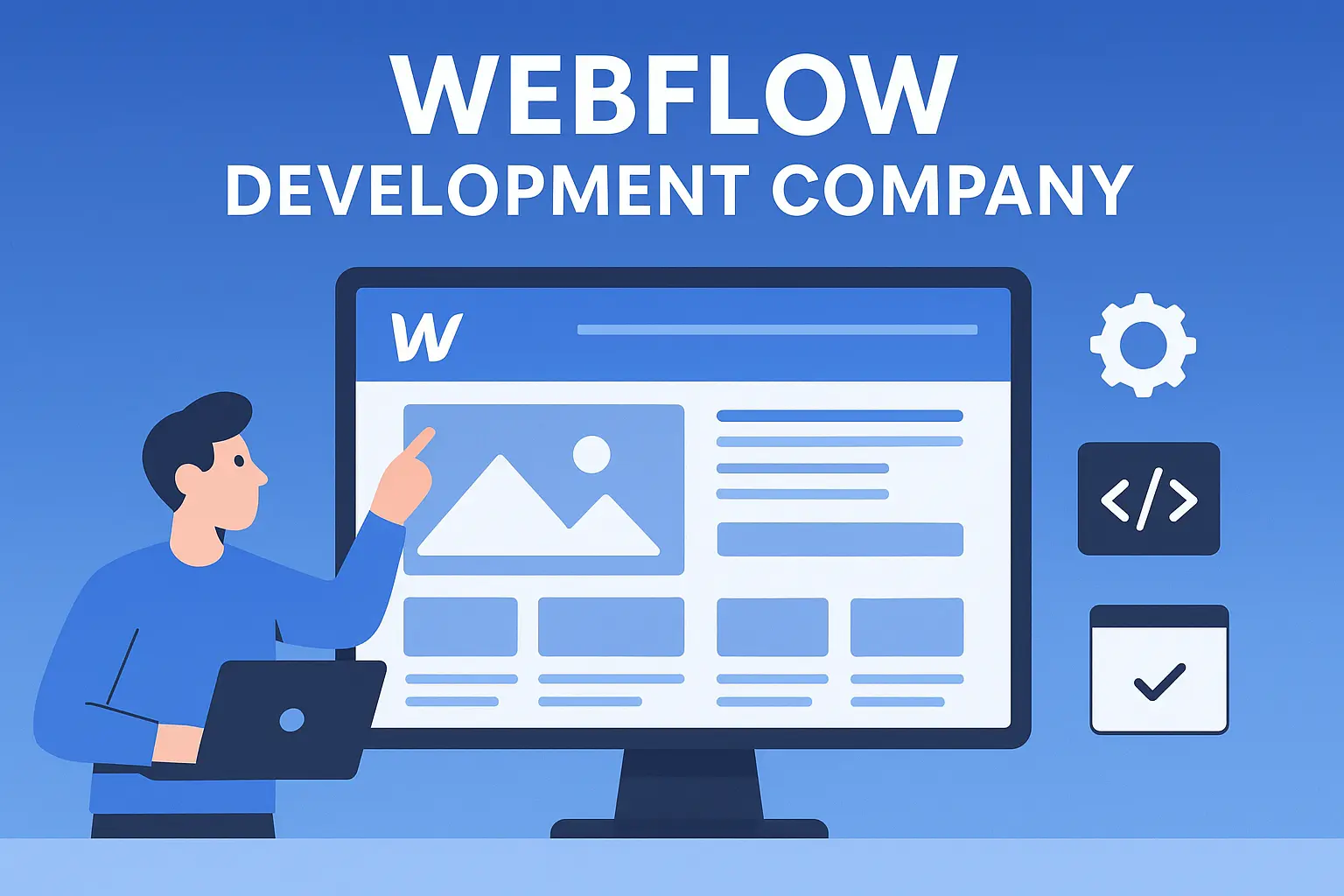A Step-By-Step Plan For Migrating Your Website To Webflow?

1. Why Migrate to Webflow?
Before diving into the migration process, let’s explore why migrating to Webflow is a smart move:
- Custom Design Freedom: Webflow allows complete control over website design without relying on pre-made templates.
- Built-In Hosting: Simplify your tech stack with fast, reliable hosting powered by Amazon Web Services (AWS).
- SEO-Friendly: With clean code, customizable meta tags, and fast loading speeds, Webflow is built for SEO success.
- No-Code Functionality: Webflow empowers non-developers to create and manage stunning websites effortlessly.
2. Assess Your Current Website
Before migration, audit your existing site:
- Content Inventory: List all pages, assets, and content you want to migrate.
- Analytics: Note important metrics like traffic, bounce rates, and top-performing pages.
- Features: Identify essential functionalities, such as forms, e-commerce, or dynamic content.
3. Plan Your Webflow Site Structure
Design a clear structure for your new Webflow site:
- Site Map: Create a site map outlining page hierarchy.
- CMS Collections: Plan dynamic content, such as blog posts or portfolios, using Webflow’s CMS.
- Design Elements: Sketch wireframes or mockups to visualize your new design.
4. Set Up Your Webflow Workspace
Create a Webflow account and set up your project:
- Choose a blank canvas or a starter template as your base.
- Familiarize yourself with Webflow’s Designer and CMS tools.
- Integrate any third-party tools you plan to use, such as Google Analytics or Zapier.
5. Recreate Your Website Design
Rebuild your website in Webflow, ensuring the design aligns with your vision:
- Use Webflow’s Designer: Drag-and-drop elements to create responsive, pixel-perfect layouts.
- Incorporate Animations: Add custom animations or interactions for a polished look.
- Test Responsiveness: Preview your site on desktop, tablet, and mobile devices.
6. Migrate Content to Webflow
Transfer your content seamlessly:
- Manual Copying: For smaller sites, copy text and upload images manually.
- CSV Import: For larger sites, use Webflow’s CSV import feature to migrate blog posts and other CMS content.
- Asset Uploads: Organize and upload images, videos, and other media to Webflow’s asset manager.
7. Optimize Your Webflow Site for SEO
Ensure your new site is optimized for search engines:
- Meta Tags: Add custom titles and descriptions for each page.
- Alt Text: Use descriptive alt text for images.
- 301 Redirects: Set up redirects for old URLs to avoid losing traffic.
- Sitemap: Generate and submit your sitemap to Google Search Console.
8. Test Your Webflow Website
Before going live, thoroughly test your site:
- Check Functionality: Test forms, buttons, and interactive elements.
- Verify Responsiveness: Ensure the site works flawlessly on all devices.
- Performance Testing: Use tools like Google PageSpeed Insights to check load times.
9. Launch Your Webflow Site
When everything is ready, it’s time to go live:
- Connect Your Domain: Update DNS settings to point to Webflow’s servers.
- Enable SSL: Secure your site with SSL to boost SEO and user trust.
- Announce the Launch: Share your new site on social media and email campaigns to inform your audience.
10. Post-Launch Maintenance
Keep your site running smoothly post-launch:
- Monitor Analytics: Track performance and make data-driven improvements.
- Regular Updates: Refresh content and add new features as needed.
- Backup Your Site: Use Webflow’s version history to revert changes if necessary.
Final Thoughts
Migrating to Webflow is an investment in your website’s future. By following this step-by-step plan, you can ensure a smooth transition while leveraging Webflow’s full potential. Ready to take the leap?
Start your migration journey today and unlock the benefits of a modern, flexible, and visually stunning website.
Frequently asked questions
Yes. Agencies like AppsRow provide ongoing maintenance, content updates, bug fixes, speed optimization, SEO monitoring, and new feature development to keep your website performing at its best.
AppsRow offers 100% custom design, fast development, optimized CMS structure, lightning-fast performance, and seamless integrations. With expert Webflow developers and long-term support, AppsRow helps businesses grow online.
The cost depends on the project. Simple landing pages start at $300, business websites range from $500–$2,000, and advanced CMS or eCommerce sites range from $2,000–$6,000+. AppsRow provides flexible pricing based on your needs.
They provide custom UI/UX design, clean Webflow development, advanced animations, CMS structuring, SEO optimization, Zapier/Make integrations, and maintenance services—ensuring a fully scalable and high-performing website.
Certified partners bring years of experience, follow best practices, deliver pixel-perfect builds, and ensure your website performs at enterprise level. They also reduce development time and improve your website’s SEO and performance score.
Webflow Development Partners are highly experienced agencies that specialize in building fast, responsive, and SEO-optimized Webflow websites. They handle design, development, CMS setup, integrations, automations, and long-term support.
AppsRow delivers high-performance Webflow websites with modern UI, fast loading speed, perfect responsiveness, SEO optimization, and full CMS setup. With professional developers and seamless support, AppsRow helps businesses grow quickly and efficiently.
Yes. Agencies offer monthly maintenance plans that include backups, updates, bug fixes, content changes, SEO monitoring, and performance optimization.
Yes. Agencies can migrate your content, pages, blog posts, and CMS structure from WordPress to Webflow seamlessly - without losing SEO rankings.
Yes. Webflow is excellent for SEO because it outputs clean code, fast loading speeds, automatic SSL, built-in schema tools, alt tags, and editable meta fields. A Webflow Development Company ensures your website is fully optimized for Google.
A professional Webflow Development Company offers a full team (designers, developers, SEO experts, QA testers), faster delivery, better project management, and long-term support. This ensures a more reliable and scalable website compared to hiring a single freelancer.
A Webflow Development Company specializes in designing, developing, and optimizing websites using Webflow. They handle everything—from custom design, responsive development, animations, CMS setup, SEO, to integrations like HubSpot, Make, Zapier, and API connections.


